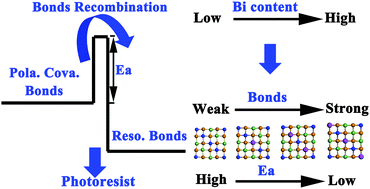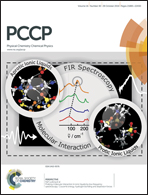A study on inorganic phase-change resist Ge2Sb2(1−x)Bi2xTe5 and its mechanism†
Abstract
The inorganic phase-change photoresist Ge2Sb1.5Bi0.5Te5 has a lot of advantages such as the two-sides of the photoresist, a large difference in the etching rate between it and Si, and so on, making it a promising candidate for use in the full-vacuum manufacture of the next generation ultra-large scale integrated circuits (ULSI). However, the physical origin of its excellent properties is still unclear, hindering its improvement and the optimization of its performance. In this work, we extended the Ge2Sb1.5Bi0.5Te5 to Ge2Sb2(1−x)Bi2xTe5 (GSBT, x = 0.1, 0.25, 0.35) and further investigated their properties. Using X-ray diffraction and X-ray absorption fine structure (XAFS) analyses, we built the structures of crystalline and amorphous GSBT, and attributed the excellent physical and chemical properties of crystalline GBST to the different atomic structures compared to amorphous GBST. Moreover, we clarified that the performance of GSBT was enhanced by the increase of Bi, accompanied by a decrease of the phase-change temperature, and gave a criterion for improving GSBT.


 Please wait while we load your content...
Please wait while we load your content...